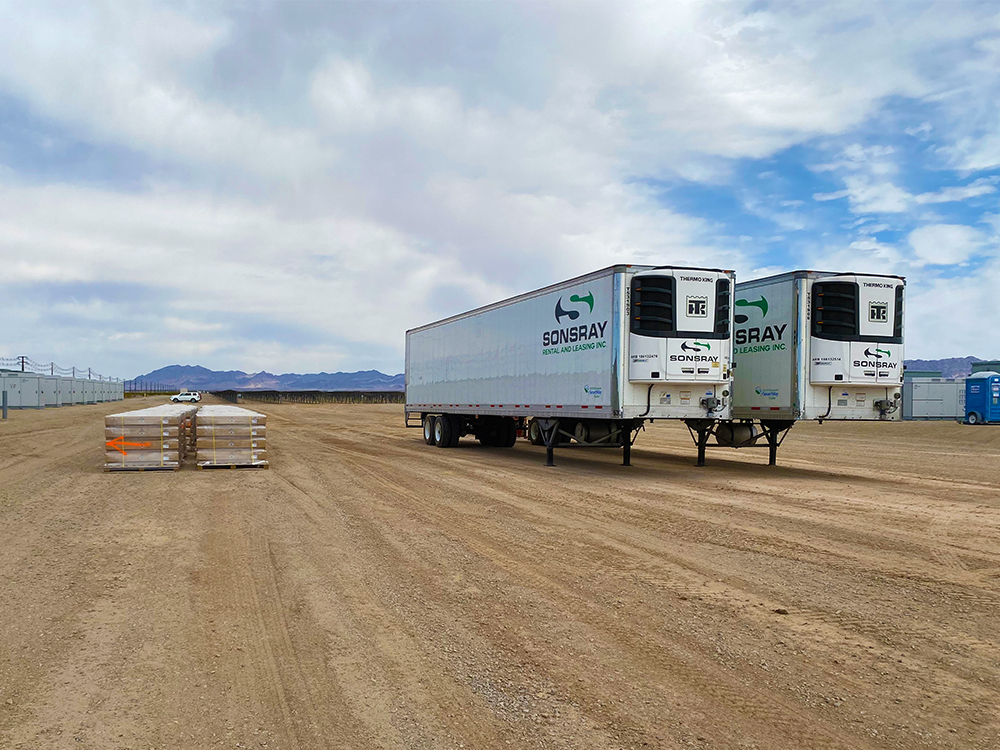
The ability to maintain a controlled climate is essential for cold chain logistics. Refrigerated trailers play a key role in this supply chain. Your reefer must be in excellent condition to achieve the correct temperature and hold steady. Otherwise, delicate cargo like ice cream could melt and end up unusable.
Obviously the moniker “refrigerated” suggests a cold, cold trailer. But how does the reefer temperature range work?
The How
Maintaining a controlled temperature is what the refrigerated trailer is all about. However, they are not designed to change the temperature of cargo. That’s why pre-cooling goods and trailers that carry them is an essential step in the cold chain.
Reefer trailers operate on a closed system. In thermodynamics, this means that no mass crosses the boundary of the isolated area. The isolated area being the inside of a reefer trailer. However, energy still transfers across the boundary. Energy being temperature in this case.
Take a pressure cooker for example: a sealed space where the contents don’t move but the temperature changes. The transfer of energy is key to understanding the way the reefer temperature range works.
The Components of a Unit
There are several components to a reefer trailer that make up the cooling system.
The compressor draws in gaseous refrigerant, and compresses it. The pressure from this liquifies the gas. This produces heat to the body of the compressor and the air around it. At this point the temperature is still warm, so it’s time for the next component.
The condenser gets the liquid from the compressor. It initiates a heat exchange process. Much like a radiator would cool an engine, the warm liquid flows into the tubing and outside to the attached fins. This provides more surface area for cooling outside air brought in by the condenser fan.
The evaporator receives the liquid next. By now, the refrigerant has surrendered most of its heat to the condenser. The cooled liquid is released into the evaporator by a metering valve. It works like a throttle to control the amount of refrigerant released. This valve also helps maintain the needed pressure.
In the evaporator, as the title might suggest, the liquid evaporates back into gas. As it returns to gaseous form, it absorbs heat from the surrounding coils. This transfers the heat from air flowing over the coils to the refrigerant. So the inside of your trailer is essentially giving up its heat to your evaporator.
This cycle continues, as the gas is then sent back over to the compressor. This cooling system allows you to achieve a set temperature. The capabilities of a given system determine the reefer temperature range.
Reefer Temperature Range
So we’ve covered the internal workings of reefer temperature regulation. But what is the typical system capable of?
The average reefer temperature range is about -13 Fahrenheit into the 80s. However, some units are equipped for even colder or hotter temperatures. For example, Thermo King advises that their cold storage ranges from -70 Celsius to +40 (aka: -94 to +104 Fahrenheit).
Finding the right temperature capability for your needs is all about understanding your cargo. For example, potatoes often ship at about 40°F. Climate control is key because perishable goods are regulated, and will be considered unusable if the temperature affects them negatively.
Regular maintenance is essential to support reefer temperature range. You need to ensure your system is working properly, otherwise it may struggle to control the climate. Without a controlled climate, you risk your cargo and your profit.
If sorting out repairs and service sounds like a costly headache, a rental is a great solution. Trailer rentals are an excellent choice for those working on short term projects. A lease suits those who may need the equipment longer.
Either way, when you work with us we cover the cost of service, maintenance and repairs for the usual wear and tear. Our expert techs make sure you can get back on the road with minimal delay.

